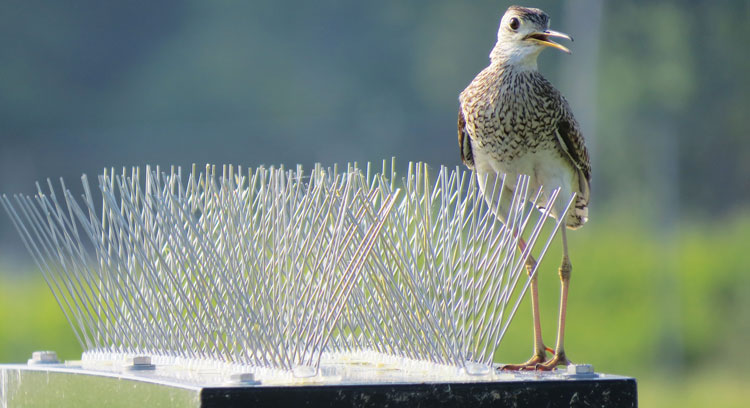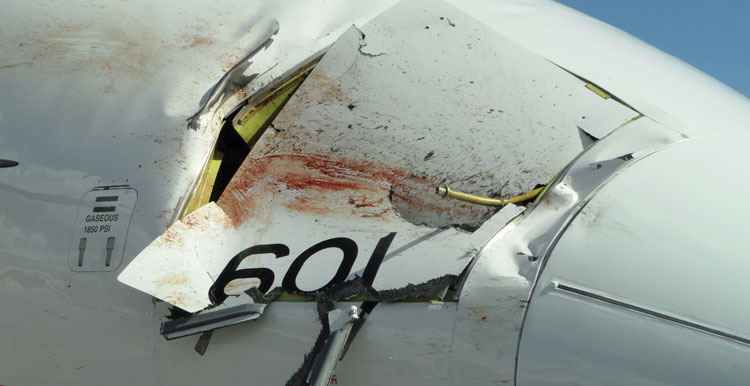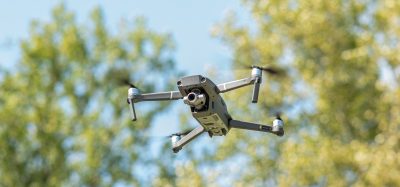Implementing SMS in airports: Wildlife Management as an exemplar
- Like
- Digg
- Del
- Tumblr
- VKontakte
- Buffer
- Love This
- Odnoklassniki
- Meneame
- Blogger
- Amazon
- Yahoo Mail
- Gmail
- AOL
- Newsvine
- HackerNews
- Evernote
- MySpace
- Mail.ru
- Viadeo
- Line
- Comments
- Yummly
- SMS
- Viber
- Telegram
- Subscribe
- Skype
- Facebook Messenger
- Kakao
- LiveJournal
- Yammer
- Edgar
- Fintel
- Mix
- Instapaper
- Copy Link
Posted: 8 December 2014 | Dr Nicholas B Carter, World Birdstrike Organisation
When birdstrikes occur the consequences can be disastrous. Dr Nicholas Carter of the World Birdstrike Association explains how an effective safety management system can help mitigate wildlife hazards.


On 15 January 2009, the world learned the importance of airport wildlife management when the public at large, and many airports worldwide, discovered that an impact with a single flock of birds can result in catastrophic consequences. The crash of U.S. Airways Flight 1549 clearly demonstrated that birds can and do pose a significant hazard to aviation and significant steps must be taken in order to mitigate the risk of a far more serious incident. Though the ultimate outcome of Flight 1549 was without the loss of life or serious injury, this was only through the confluence of exceptional piloting skills and exceedingly fortunate circumstances. If the birdstrike had occurred 60 seconds earlier, a wide and straight river near a large contingency of available resources hadn’t been available or indeed a less experienced team of pilots had been in control of that aircraft, the results could have been remarkably different.
Programmes for airport wildlife management
As ICAO implements SMS (Safety Management Systems) requirements for all international airports with its amended Annex 14, and the FAA moves to a more formally delineated requirement to implement SMS at Part 139 airports, airports now face the need to develop fully-fledged SMS programmes. As an integral part of an airfield’s SMS, bird/wildlife management will also need to be incorporated into the SMS plan. With a dearth of literature on SMS and wildlife management and without an abundance of long-term experience for wildlife management/SMS integration, airports will not have a ready resource from which to draw and will face the difficulty of instituting programmes they may not be fully prepared to undertake. However, examination of the implementation of a wildlife management programme into a SMS plan or the creation of a SMS plan from scratch can help illustrate the features of an exceptional overall SMS programme, as well as point out the problems associated with moving to a more formalised safety programme under the guise of SMS.


Damage caused by a birdstrike
It is first important to understand some critical features of a functioning airport SMS programme: safety culture, education and training, data collection and review, reporting, risk assessment, gap analysis, and performance indicators.
Wildlife management can serve as a perfect exemplar in understanding how SMS can be implemented in the aviation environment. As a reminder, SMS focuses on the control of processes, not the end result. Throughout much of aviation history, safety has focused on the end result of an accident, rather than the process that led to the incident. Aviation safety was typically reactive – a type of ‘safety by disaster’. SMS on the other hand, attempts to be proactive by identifying and examining problems before they occur and taking steps to mitigate these hazards in order to prevent incidents from transpiring, rather than trying to stop them from happening again.
There will always be hazards and risks associated with the aviation world and the highly complex nature of machines in flight. The ultimate goal of SMS is to recognise and evaluate these risks before an incident occurs; to decide what level of risk is acceptable; and to attempt to lower these risks below that level. The limits of this article are far too brief to systematically cover all aspects of a comprehensive SMS programme, but we will attempt to briefly examine two features of SMS programmes in the context of wildlife management – safety culture and performance indicators.
Developing a strong safety culture for airport operations
A key feature of a well-designed SMS programme is the development of a safety culture throughout all aspects of the operating airport. Airport wildlife management, for example, is greatly enhanced through a broad-based safety culture at any airfield. Under SMS, safety must become a way of life for an airport and all individuals, not simply a singular event. SMS requires participation from all levels and in particular, requires a serious commitment from upper management. It must be a comprehensive programme and must encompass all facets of airport operations. Without complete buy-in from the top levels of management, an SMS programme is doomed to failure. Executives must commit resources and money to an SMS programme and safety must become the number one priority over all other motivations. Ultimately, financial investment in an airport’s SMS programme must be a part of an airport’s long-term business plan. Though many managers view the monetary requirements of safety programmes as simply throwing money out the window, as the industry saying goes, “if you think safety is expensive, try an accident”. Safety is expensive and certainly the costs must be weighed against the bottom line, but with a primary focus on profit margins and a reactionary stance to safety incidents, an airport is simply biding its time until the next significant accident and endangering the lives of its own customers – the flying public.
Airport wildlife management illustrates two perfect examples of the need for this wide-ranging culture of safety under SMS – strike reporting and reporting the presence of wildlife. For strike reporting, knowing what numbers and species of birds are being struck at an airport assists biologists and managers in determining what hazards may be present at an airfield. Incomplete knowledge of the actual numbers of bird/wildlife strikes results in an incomplete picture of the threats involved. Bird/wildlife strike reporting ultimately relies on a large number of entities to accurately report strikes – from airline maintenance personnel that encounter evidence of a birdstrike through ‘snarge’ on an aircraft, to pilots that experience a birdstrike in flight, to operations agents that discover a carcass on the tarmac during a runway inspection sweep. Any individuals that may be exposed to evidence of a birdstrike must be full educated and trained on the importance of reporting all strikes and a streamlined system must be enacted to accurately record (and ultimately evaluate) this data. This is the ‘integrated’ aspect of SMS. Safety (and thereby reporting of safety events) must be integrated into the airport system at all levels and must be integrated into everyone’s job. This not only requires the development of such a data recording system but relies on the commitment from upper management to both require and deliver training for all individuals and to provide the necessary resources to develop the data collection processes.
Reactive and proactive approaches to wildlife management
Historical strike numbers are an important factor in developing a comprehensive risk assessment for an airfield – a critical component of a strong SMS programme. Knowing what birds are being struck at an airfield can greatly assist in predicting, through an appropriate risk assessment, what birds may be struck in the future. Notwithstanding this feature, other more predictive factors must be analysed in order to perform a quality risk assessment (such as numbers of birds present at the airfield, size of the birds, group size, etc.). Examining only historical strike data is far too simplistic and reactive in nature, rather than proactive (the guiding principle behind SMS). The same approach should be undertaken for other components at an airfield while integrating them in to the overall SMS programme. By way of example, it is important not only to examine past runway incursion events in order to prevent future incidents from transpiring, but it is essential to critically and proactively assess potential factors that could cause a future incursion (such as numbers of vehicles/aircraft, airfield driver training, ATC visibility, signage, etc.).
Another example of the power of a systemic approach to SMS wildlife management is the reporting of the presence of hazardous wildlife to those responsible for mitigating the threat. Even if an airport has a dedicated biologist on staff that is directly responsible for minimising the risk of a serious birdstrike, that individual is only one set of eyes and can only be at one place on the airfield at a time. ‘Report all hazardous wildlife’ should be the mantra for all individuals working on an airfield. Not unlike FOD or airside security, anyone operating at an airfield should be tasked with mitigating the hazard or at least reporting the hazard to the appropriate party.
There are a huge number of people working at an airport who can serve as additional ‘watchdogs’ for the presence of wildlife or conditions that are conducive to wildlife, including airfield sweepers, operations agents, security personnel, mowers, air traffic controllers, pilots, ground crews and ARFF staff. All of these can serve a vital role in alerting airfield personnel of the presence of hazardous wildlife, as knowledge of the hazard is a prerequisite to the actual mitigation of the threat. This requires educating these agencies on the importance of reporting hazardous wildlife (and why/how they pose a threat to aviation), as well as identifying conditions that could lead to the presence of potentially hazardous wildlife (such as gaps in a fence, open rubbish containers, road kill, stagnant water, etc.). Even members of the flying public should be integrated into the airport wildlife programme, from such simple steps as properly disposing of organic refuse at the airport to reporting the presence of birds observed at or near the airfield. This ‘reporting culture’ can facilitate prompt responses to wildlife threats, as well as instil a sense of involvement in the wildlife programme and inspiring the safety culture at all levels of the operation.
Performance indicators
One of the most challenging aspects of integrating a wildlife programme into an airport’s SMS plan is the establishment of performance indicators. Designation and evaluation of well-defined performance indicators are keystones in the continuing evolution of a properly managed SMS programme. At first blush, this may seem quite simple for a wildlife management programme – the easiest and most straightforward performance indicator being the overall number of birdstrikes. The implied goal of any airport wildlife management programme is to lower the total number of birdstrikes each year. Unfortunately, under the guise of SMS, this standard is fraught with practical issues in both the implementation and understanding of this determination, as well as a failure to actually measure the true risks correlated with an airfield’s wildlife strike mitigation efforts.
As noted above, one important feature of a properly implemented wildlife management programme under SMS is the full reporting of birdstrikes. An uptick in an airfield’s strike numbers may simply be a manifestation of improved reporting, not a decrease in overall programme performance. As awareness, training, and involvement of all personnel across the airport environment improve, strike rates naturally increase. The FAA has estimated that only about 25 per cent of all known strikes in the U.S. are actually reported. Worldwide, the reporting rate is likely much lower than that. Relying on reported strike rates as a performance standard may fundamentally degrade an airport’s SMS programme, rather than strengthen it, as it actually encourages the underreporting of strikes in order to improve strike numbers.
Recent attention has been focused on a new standard for measuring the performance of an airport wildlife programme – average mass-per-strike (taking the total mass of all wildlife struck divided by the total number of strikes). Utilising average mass-per-strike not only eliminates the bias against increased reporting, it ultimately incentivises the reporting of all strikes. Most strikes that go unreported are typically strikes with smaller birds or carcasses found on the runway. Reporting an additional strike with a small bird (a swallow, for example) results in a higher overall strike number but more often than not, lowers the average mass-per-strike. For example, if an airport had 10 reported strikes with wildlife last year and 50 reported strikes this year, conventional wisdom says that the airport’s SMS programme (if strikes were the performance indicator) is deteriorating. However, if the reporting culture is significantly improving over the year and the 10 strikes represent strikes with flocks of larger birds (e.g. waterfowl) and the 50 strikes represent strikes with smaller birds (e.g. small passerines), this this would actually reflect a dramatic enhancement of the airport’s wildlife and SMS programmes, not a degradation.
Ultimately, choosing a relevant performance indicator that is truly reflective of the goals of an SMS programme may be the most difficult, and yet most crucial stage of SMS implementation. Without a standard that is both objective and accurately reflects the proactive goals of the SMS plan, the ongoing evaluative and evolutionary nature of SMS becomes meaningless. As is seen with wildlife management programs, setting appropriate performance indicators for any component of an airport’s SMS programme is vital in establishing applicable goals and standards by which to evaluate progress. Rare events, such as accidents or significant safety violations, may be difficult to analyse or compare due to their overall infrequency. Evaluation of the processes and conditions that can lead to these events is generally a far better criterion to judge how well a programme is working.
Biography

















